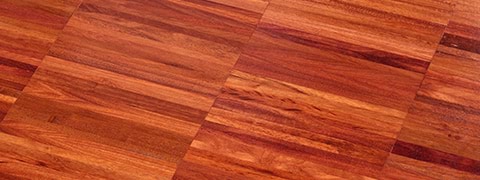Parquet as a design product
Experts exchange views at a seminar held in Milan entitled “Wooden flooring: The present recapturing the past”
Experts exchange views at a seminar held in Milan entitled “Wooden flooring: The present recapturing the past”
Wood. A material that evokes ancient traditions but is also an integral part of our daily lives, found in the buildings in which we live, for example, as a raw material in our floors. And it was precisely to parquet, its history and its future, that Mapei decided to devote a training event and meeting on 1st July.
The Mapei auditorium in Milan opened its doors to the leading players in the wooden flooring industry (representatives from institutions, businesses, associations and magazines), who met to discuss various topics related to parquet.
The event was chaired by Angelo Giangiulio, Corporate Product Manager of the Mapei product line for wooden floorings, who also recalled Mapei's ongoing commitment in this important segment of the building industry. "A meeting that we organised not to present a new product line or talk about Mapei," so Giangiulio stated, "but to take stock of our sector and our fine product in the company of people who know all about it and are constantly involved in this sector. In the year of Mapei's 85th anniversary, we are continuing our commitment to training, innovation, research and cultural interaction".
Challenges and opportunities for an expanding sector
The seminar began with an analysis of the current situation of the Italian building industry and of the wooden flooring sector conducted by Francesco Doria, Market Research Manager at Mapei SpA (Italy). Doria highlighted the fact that parquet has a 6.2% share on the flooring market which in 2021 reached a total size of 150,375 million m2. Wooden flooring is the third largest market segment, after ceramic tiles and natural stones. Since it reached a growth of almost +21% last year, Doria concluded that: “Overall, the prospects for the sector are good through to 2024”.
The floor was then taken by Renza Altoè Garbelotto, Director in charge of the Edilegno/FederlegnoArredo Wooden Floors Group and CEO of the parquet manufacturer Garbelotto, who focused on benefits offered by parquet: "A product that increasingly embraces research, culture, beauty, fashion and design. Parquet is no longer just a type of floor; it is now a furnishing accessory. No other floor covering offers customisation possibilities comparable to those of a wooden floor'.
A speech by Lorenzo Onofri, President of FEP (European Federation of the Parquet Industry) and CEO of Stile Società Cooperativa presented the audience with the current international scenario: the European parquet industry, which, after a stable 2020, then recorded 5.8% growth in sales, primarily due to how homes have been adapted to post-pandemic lifestyles. In addition to reiterating the important role of associations at this historic moment in time, Mr. Onofri focused on the purchasing habits of parquet consumers and the current availability of raw materials, such as oak, in Europe. "There is a need," he said, "to regulate the export of logs from Europe, but also to overcome cultural shortcomings on the part of distributors. We need to reinvent ourselves, carry out research, introduce innovation and come up with alternatives”.
The engineer Rita D'Alessandro from the Edilegno/FederlegnoArredo Standards Office took stock of the standards regulating wooden flooring in Italy and abroad, such as UNI standards already published (UNI 11368), under development (UNI 1609878) or waiting to be revised (UNI 11265, UNI 11538-1, and UNI 11556). On a European level, Ms. D'Alessandro mentioned the EN 13647, EN 17456 and EN 17009 standards, also focusing on the testing method referred to in EN 17456 to work out the top layer delamination of multilayer wooden elements. In relation to standards under review, she pointed out that the limit of the delamination of top layers after ageing treatment referred to in EN 13489 is currently being debated by representatives of various European countries. On a global level, ISO standards related to wooden floors, including bamboo floors, were also mentioned.
Professor Fabio Braga, a wood technologist and associate professor at the Fine Arts Academy in Florence, then took those present on a fascinating journey to discover the origins of parquet flooring, highlighting the great variety of wood species used and the great skill of the craftsmen who make them. With the help of images of great beauty, Braga showed how the art of wood craft was able to create masterpieces, such as the inlaid floor of Casa Bossi in Novara, the first painted wooden floors in 17th century England, decorative wooden panels, and the elegant Soubise and Aremberg parquet patterns, which were fashionable in the 19th century in France.
Proceedings were closed by Mikaela Decio, Mapei Group’s Corporate Environmental Sustainability Group Leader, with a speech on sustainability, an increasingly important aspect for the parquet industry too. Ms. Decio recalled how Mapei constantly invests in Research & Development and innovation to reduce the environmental impact of its processes and products, increasing the quantity of recycled materials used in product formulations, reducing the amount of waste and offering solutions (including some for the installation of parquet) with low emissions of volatile organic substances (EMICODE EC1PLUS certified) to guarantee good indoor air quality. In addition, Mapei provides certified documents such as EPDs (Environmental Product Declarations) for its products, as well as P.A.S.S (Profile and Aspects of Sustainability in Synthesis) specifically regarding its materials’ contribution to more sustainable installation.






